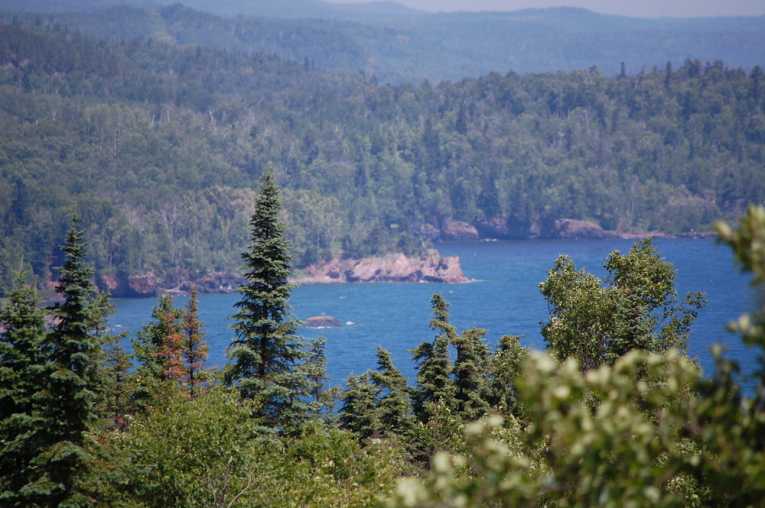Sediment acts as a time capsule, recording the history of any area with a lake. That's the view of the director of the Large Lakes Observatory (LLO), which is dedicated to finding out more about the freshwater lakes.
Geologist Steve Colman, from the LLO, in Duluth, USA, says, "In lake basins, you almost invariably are accumulating fine-grain sediments in deep water. Those sediments pile up year after year and each increment is like a little time capsule.
"The analogy I like to use is that the sediments are like a tape recorder, as they accumulate, they're recording something about the climate, the hydrology, the energy of the lake.
"Now, it's not always very straightforward to play back that tape. We have to use some pretty fancy chemical and biological analyses to try to figure that out, but, in principle, we have a tape recorder that's recording past history of any place there are lakes in the world."
The LLO, on the Duluth campus of the University of Minnesota, was created in 1994 to research the geology, biology, chemistry and physics of large lakes. It now has 10 full-time staff and around 30 technicians and graduate students, plus the crew that runs the 27metre Blue Heron research ship.
Oceanographer and LLO founder Tom Johnson says, "As I started doing work in Lake Superior, I came to realize that there had been very little done in the way of scientific study of these lakes beyond the biology of the fish.
"The University of Minnesota Duluth decided that they wanted to have an institute in Duluth, and the idea was to have expertise locally to look after the welfare of Lake Superior. When I was interviewed for the job, I was interested in those objectives, but also wanted to see the Large Lakes Observatory be global in outlook."
Steve Colman says the condition of large lakes vary enormously, from Lake Erie, which suffers from pollution and invasive species to Lake Superior, which is in good condition.
The Blue Heron, that takes up to 11 crew and scientists completed research cruises on Superior, Erie and Huron lakes in the summer and the team also gathered data from a robotic glider.
Physicist Jay Austin says, "Before it goes out, we give it a set of locations and different mission parameters, such as how deep we want it to go and how often we want it to come up, and we can watch how the physics and the biology of the lake change during that period.
"We're looking at things such as chlorophyll fluorescence, turbidity, dissolved oxygen, dissolved organic matter - a whole suite of physical, chemical and biological indicators."
Jacques Finlay, a University of Minnesota professor who studies the ecology of aquatic ecosystems, says, "This was a unique sampling trip for us. We reached many sections of the lakes that we don't normally see."
Steve Colman says the sediment of lakes used by ancient peoples, such as the Mayans, can provide indications about how they lived.
"We can actually go back in the lake sediments to see whether there was a big climate shift when the empire fell or environmental problems or soil erosion, for instance, and we can reconstruct some of that to give us more insight about human history."
The LLO is also investigating how increasing agricultural needs for water could lead to a drop in water levels of Africa's Lake Malawi, which the country depends on for power generation.
Jay Austin explains, "The lake level is very sensitive to small changes in climate and if the lake were to just drop another two metres, which it has done in the last century, it would shut off power production for them. So we're very interested in the energy balance and the water balance on that lake. That's an example of a lake where the more we can develop an understanding of how it works, the more likely we are going to be able to help to protect and more carefully manage it."
The LLO is supported by the National Science Foundation, an independent federal agency created to promote the progress of science, advance national health, prosperity and welfare and to secure the national defence.
Research opportunities are available at the LLO for those who are interested in studying large lakes, says Tom Johnson.
"Just as comparative anatomy advances our knowledge of human health, so too do our studies of large lakes in different settings. We have to compare how a big lake works in a temperate system versus tropical or sub polar. Through those kinds of comparisons, we gain insights into the dynamics of these lakes and the processes that are really responsible for maintaining their ecosystems."
Jay Austin adds, "We're interested in the fundamental underpinnings of lakes. Our focus is on how they function from a scientific perspective rather than how to manage and restore them. But, you need those fundamental underpinnings in order to produce effective management."










